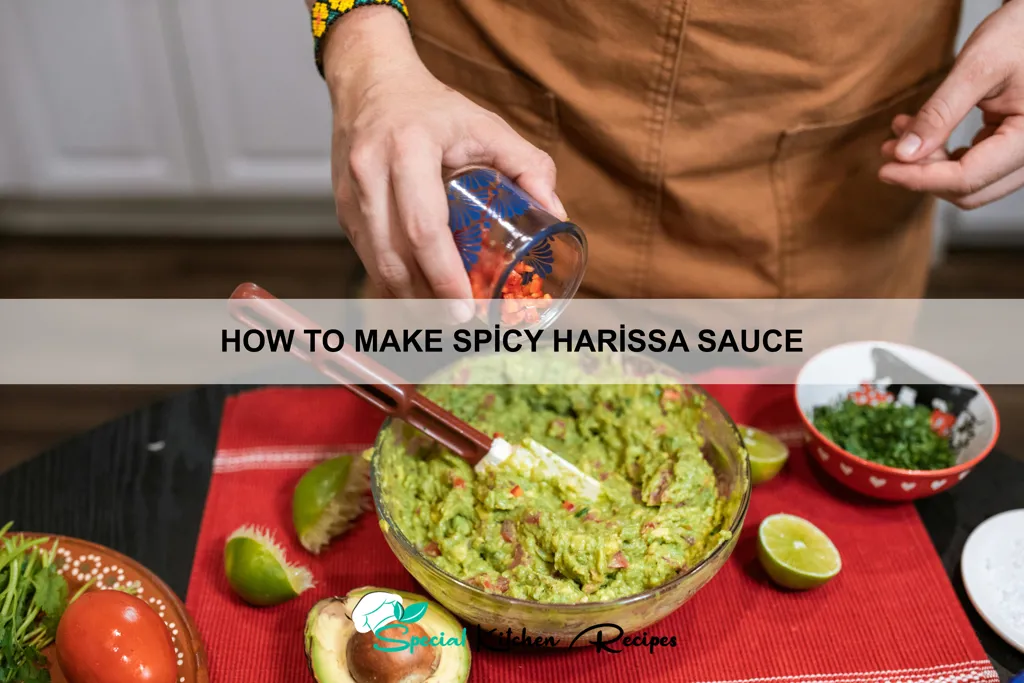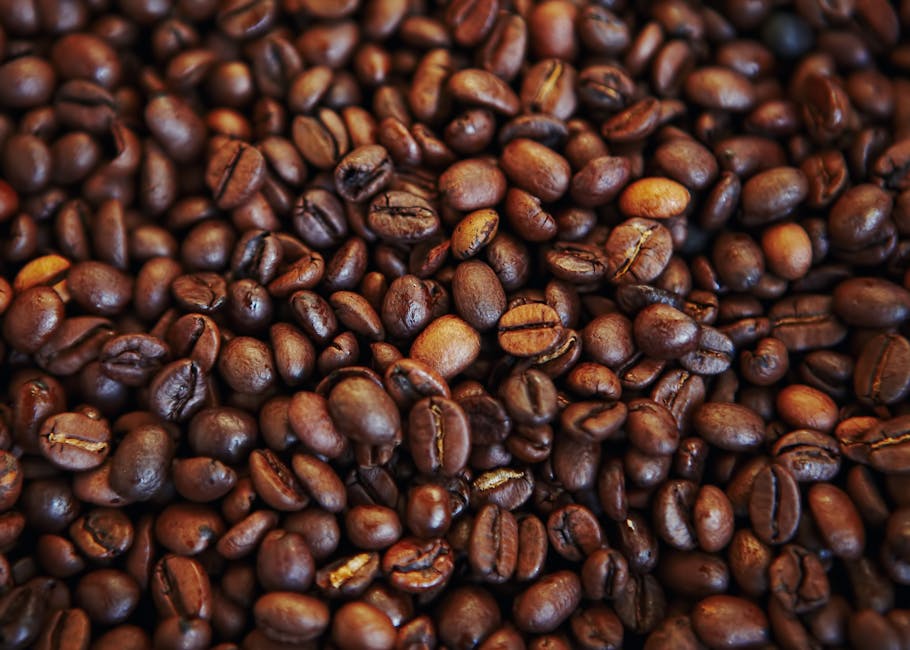Prepare to embark on a culinary journey to the vibrant lands of North Africa, where we’ll uncover the secrets of creating a fiery and flavorful condiment: Harissa paste. This isn’t just any sauce; it’s a cornerstone of Tunisian cuisine, a flavorful explosion that reflects centuries of culinary tradition and cultural exchange. Harissa’s origins trace back to the ancient Berber tribes of North Africa, who utilized readily available ingredients like chilies, spices, and herbs to create a paste that both seasoned and preserved food. Its exact recipe varied widely across regions and families, a testament to the rich tapestry of Berber culinary heritage.
The word harissa itself is believed to derive from the Arabic word ḥarīs, meaning to plow or to till, suggesting a connection to the hard work and dedication involved in its preparation. While the precise timeline is debated, harissa’s widespread popularity exploded during the Ottoman Empire’s reign, spreading its fiery embrace across the Mediterranean and beyond. Today, it’s not just a staple in Tunisia; variations of harissa can be found throughout Morocco, Algeria, and even parts of Libya and Egypt, each boasting its unique blend of spices and levels of heat.
More than just a condiment, harissa holds significant cultural importance. It’s an integral part of numerous traditional dishes, adding depth and complexity to tagines, couscous, and grilled meats. Its vibrant red color, mirroring the fiery spirit of the region, is a visual feast in itself. The spice content varies dramatically, ranging from relatively mild to intensely fiery, reflecting regional preferences and individual tastes. Some studies suggest that the average Tunisian household consumes over 5kg of harissa annually, highlighting its ubiquitous presence in the daily diet. The spice blend itself often includes a combination of chili peppers, garlic, cumin, coriander, caraway, and other aromatic ingredients, creating a complex flavor profile that is both savory and slightly sweet.
Ingredients and Measurements
Creating a truly delicious harissa sauce hinges on using high-quality ingredients and precise measurements. The following recipe yields approximately 2 cups of spicy harissa paste. Feel free to adjust the quantities based on your desired yield and spice preference, but maintaining the ratios is crucial for balanced flavor.
Fresh Red Peppers (about 1 lb): This is the foundation of your harissa. We recommend a mix of peppers for complexity. Use approximately 8-10 large red chili peppers like Fresno or California chilis for a good balance of heat and flavor. You can also incorporate 2-3 smaller, spicier peppers like serrano or habanero for an extra kick. Remember to wear gloves when handling chilies to avoid skin irritation.
Garlic (6-8 large cloves): Garlic provides a pungent and savory base note that complements the heat of the chilies. Use fresh, plump cloves for the best flavor. If using pre-minced garlic, reduce the amount slightly as it tends to be more concentrated.
Cumin (2 tablespoons): Ground cumin adds a warm, earthy flavor that is essential to harissa’s distinctive character. Use freshly ground cumin if possible for the most vibrant taste. Stale cumin can taste bitter.
Coriander (1 tablespoon): Ground coriander offers a citrusy and slightly sweet note that balances the spice. Similar to cumin, freshly ground coriander is recommended for optimal flavor.
Caraway Seeds (1 tablespoon): Caraway seeds provide a subtle, slightly bitter note that adds depth and complexity to the sauce. Toast the caraway seeds lightly in a dry pan before grinding to enhance their aromatic qualities.
Sweet Paprika (2 tablespoons): Sweet paprika contributes a smoky sweetness and vibrant red color. Use a good quality paprika for the best results. You can also experiment with a blend of sweet and smoked paprika for a more complex flavor profile.
Olive Oil (1/2 cup): High-quality extra virgin olive oil is crucial for both flavor and texture. It helps to create a smooth, emulsified paste. Avoid using refined olive oil, as it will lack the characteristic flavor.
Salt (1-2 teaspoons): Salt is essential for enhancing the flavors and preserving the harissa. Start with 1 teaspoon and add more to taste, depending on the saltiness of your other ingredients.
Lemon Juice (2 tablespoons): Freshly squeezed lemon juice adds brightness and acidity, cutting through the richness of the olive oil and balancing the heat. Avoid using bottled lemon juice, as it often lacks the fresh, vibrant flavor.
Equipment and Utensils
Making delicious harissa requires the right tools to ensure smooth processing and optimal flavor extraction. While you can adapt certain steps, having the correct equipment will significantly enhance your experience and the final product’s quality.
A high-powered blender or food processor is essential. A standard blender might struggle with the tough ingredients like roasted peppers and spices, resulting in a less smooth and potentially grainy texture. Aim for a blender with at least 1000 watts for optimal performance. A food processor with a robust motor is also a great option, particularly if you’re making a larger batch. Ensure your chosen appliance is large enough to comfortably hold all the ingredients without overcrowding, which can hinder proper blending.
Beyond the blender or food processor, you’ll need a selection of basic kitchen utensils. This includes a large bowl (at least 3-quart capacity) for combining ingredients before blending. A good quality chef’s knife (approximately 8 inches) is crucial for efficiently chopping the garlic, chili peppers, and other vegetables. A smaller paring knife can be helpful for more delicate tasks like removing stems from peppers. You’ll also need a cutting board, preferably one made of durable material like wood or plastic that’s easy to clean.
Measuring tools are vital for consistency. Accurate measurements of spices are key to achieving the desired level of heat and flavor. Invest in a set of measuring spoons (1 teaspoon, 1/2 teaspoon, 1/4 teaspoon) and measuring cups (1 cup, 1/2 cup, 1/4 cup) to ensure precision. A kitchen scale can be particularly useful for weighing ingredients like spices, which can vary in density and volume.
For roasting the peppers, a baking sheet is necessary. Line it with parchment paper for easier cleanup. If you are using a dehydrator to dry the peppers, that is your primary roasting appliance. If not, an oven is required, and you can use a small sieve or strainer for removing the seeds and membranes if you choose to do so. Finally, you’ll need airtight containers to store your finished harissa sauce. Glass jars are ideal, offering both visibility and preservation of flavor.
Proper cleaning is paramount. Immediately after use, rinse and clean your blender or food processor to prevent staining and ensure easy maintenance. Washing your knives and cutting board thoroughly is also essential for maintaining kitchen hygiene.
Preparation of Ingredients
Before you begin assembling your vibrant harissa paste, meticulous preparation of the ingredients is key to unlocking the depth of flavor this sauce is known for. We’ll start with the peppers, the heart of our harissa.
Roasting the Peppers: For the best flavor, we’ll roast 1 pound (approximately 450g) of red bell peppers. You can do this under a broiler, on a gas stovetop, or even in a preheated oven at 400°F (200°C). If using a broiler, place the peppers directly on the rack, turning occasionally, until the skin is blackened and blistered all over – this takes about 15-20 minutes. For the oven, roast them on a baking sheet for about 30 minutes, flipping halfway through. For a gas stovetop, hold the peppers directly over the flame, turning constantly, until charred. Important: Proper charring is crucial for developing a smoky depth of flavor.
Once roasted, place the peppers in a bowl and cover tightly with plastic wrap for at least 15 minutes. This steaming process helps loosen the skins, making them easier to remove. After steaming, peel off the charred skin, remove the stems and seeds, and roughly chop the peppers. Don’t worry about being too precise; a rustic chop works best.
Toasting the Spices: To awaken the aromatic oils in our spices, we’ll toast them before grinding. Measure out the following spices: 2 tablespoons of cumin seeds, 1 tablespoon of coriander seeds, 1 teaspoon of caraway seeds, and 1 teaspoon of fennel seeds. Heat a small dry skillet over medium heat. Add the spices and toast, stirring constantly, until fragrant and lightly browned, about 2-3 minutes. Be careful not to burn them; burnt spices will impart a bitter taste. Remove from heat and let cool completely before grinding.
Preparing the Garlic and Other Ingredients: While the spices cool, prepare 4 large cloves of garlic. Peel and roughly chop them. You’ll also need 2 tablespoons of good quality olive oil, 1 tablespoon of red wine vinegar, 1 teaspoon of smoked paprika (optional, but adds a lovely smoky note), and 1-2 teaspoons of cayenne pepper (adjust to your desired level of spiciness). Having all ingredients prepped and measured will make the blending process smoother and more efficient.
Professional Tip: For a truly authentic harissa, consider using a mix of fresh and dried chilies. Adding a few finely chopped fresh red chilies along with the roasted peppers can enhance the heat and add a fresh dimension to the flavor profile. Remember to adjust the amount of cayenne pepper accordingly.
Making the Harissa Paste (Blending/Processing Techniques)
Creating a smooth and flavorful harissa paste relies heavily on the blending or processing technique. We’ll explore two main methods: using a food processor and using a mortar and pestle. Both yield excellent results, but offer different textures and levels of control.
Method 1: Using a Food Processor (for larger batches and smoother paste)
This method is ideal for larger batches and achieving a very smooth, almost creamy, harissa paste. Begin by adding all your ingredients – approximately 200g roasted red peppers (deseeded and roughly chopped), 50g roasted red chilies (deseeded and roughly chopped, adjust to your spice preference), 2 large cloves garlic, 1 tablespoon ground cumin, 1 tablespoon ground coriander, 1 teaspoon smoked paprika, 1 teaspoon caraway seeds, 1 teaspoon sea salt, and 2 tablespoons olive oil – to a food processor. Ensure all ingredients are roughly the same size to prevent uneven processing.
Pulse the ingredients initially for short bursts, scraping down the sides of the bowl as needed, to prevent ingredients from clumping at the bottom. Gradually increase the processing time to achieve your desired consistency. Over-processing can lead to a bitter paste, so it’s crucial to stop and check the texture frequently. Aim for a smooth paste, but a slightly coarse texture is also acceptable and adds character. Once the paste is blended to your liking, transfer it to a clean container and store it in the refrigerator.
Method 2: Using a Mortar and Pestle (for smaller batches and a more rustic texture)
The traditional method, using a mortar and pestle, offers a more hands-on and rustic approach. This method is best suited for smaller batches and allows for greater control over the texture. Start by adding the roasted red peppers (approximately 100g), roasted red chilies (25g, adjust to taste), garlic (1 large clove), and spices (half the quantities from the food processor method) to the mortar. Begin by crushing the larger ingredients, like the peppers, before adding the smaller ones like the spices.
Using a firm, grinding motion, slowly work the ingredients together. Add the olive oil gradually as you grind, to help create a smooth paste and prevent the mixture from becoming too dry. This process takes time and patience, but the resulting paste will have a more intense flavour and a slightly coarser texture. Once all ingredients are thoroughly combined and a smooth paste is achieved, transfer to a container and store in the refrigerator.
Regardless of the method you choose, remember to taste and adjust the seasoning as needed. Some people prefer a spicier harissa, so feel free to add more chili. Similarly, you can adjust the amount of salt and olive oil to your liking. Enjoy your homemade harissa!
Adjusting Seasoning and Consistency
Once your harissa paste has simmered and cooled slightly, the crucial stage of adjusting seasoning and consistency begins. This is where your personal preferences truly shine through. Taste a spoonful of the harissa – it should be intensely flavorful, a balance of sweet, sour, and fiery heat. If not, now’s the time to fine-tune.
Salt is paramount. Start by adding 1 teaspoon of salt at a time, tasting after each addition. Harissa needs significant salt to balance the other intense flavors and act as a preservative. The final salt content should be around 2-3% of the total weight of your ingredients. Don’t be afraid to add more than you initially think you need; the salt will integrate and mellow over time.
Next, consider the heat. If you find it too mild, add more chili flakes (1/2 teaspoon at a time, tasting in between), or a finely chopped fresh chili (like a serrano or bird’s eye chili, start with 1-2, depending on size and heat preference). If it’s overly spicy, try adding a tablespoon of good quality olive oil or a teaspoon of sugar to temper the heat. Remember to taste frequently – your palate is your best guide.
The consistency is equally important. Harissa can range from a thick paste to a smoother, almost spreadable consistency. If it’s too thick, add a tablespoon or two of water or olive oil at a time, blending thoroughly until you reach your desired texture. Avoid adding too much liquid at once, as it can be difficult to regain the desired thickness. If it’s too thin, you can simmer it uncovered for a longer time to reduce the liquid. Alternatively, you can add a tablespoon of roasted red peppers, finely pureed, to thicken the sauce slightly without significantly altering the flavor profile.
Finally, consider the acidity. A squeeze of lemon juice (1/2 to 1 tablespoon) can brighten the flavors and enhance the overall taste. Taste again and make any final adjustments to salt, heat, or acidity as needed. Remember that flavors will meld and deepen over time, so allow your harissa to rest for at least a few hours, or preferably overnight, before making any significant adjustments again. This allows the flavors to marry and the intensity to mellow slightly.
Once you’re happy with the flavor and consistency, your delicious homemade harissa sauce is ready to be enjoyed! Store it in an airtight container in the refrigerator for up to 2 weeks, or freeze it for longer storage.
Storage Instructions
Proper storage is crucial for maintaining the vibrant flavor and texture of your homemade harissa sauce, and ensuring its safety. Following these instructions will help you enjoy your delicious harissa for weeks, or even months.
Immediately after preparing your harissa, allow it to cool completely before storing. This prevents condensation from forming inside the container, which can lead to spoilage. Let the sauce rest at room temperature for at least 2 hours, or until it reaches room temperature.
Choose the right container. Glass jars with airtight lids are ideal for storing harissa. Ensure the jars are thoroughly clean and dry before filling. Avoid using containers made from reactive metals like aluminum, as these can affect the sauce’s flavor and color. Sterilizing your jars beforehand is a recommended best practice. You can do this by washing them in hot, soapy water, rinsing thoroughly, and then placing them in a low oven (around 150°F/65°C) for 15-20 minutes.
Fill the jars leaving approximately ½ inch (1.25 cm) of headspace at the top. This allows for expansion during temperature fluctuations. Overfilling can lead to spills and potential contamination.
For short-term storage (up to 2 weeks), refrigerate your harissa sauce. Store it in the refrigerator at a temperature below 40°F (4°C). The intense flavors will mellow slightly over time, but the sauce will remain perfectly safe and delicious.
For longer-term storage (up to 3 months), freeze your harissa sauce. Portion the sauce into ice cube trays or smaller containers for easier use. Once frozen solid, transfer the portions to freezer-safe bags, pressing out as much air as possible. Properly frozen harissa can maintain its quality for up to 3 months, though the texture might become slightly thicker upon thawing.
Thawing instructions: Transfer the desired amount of frozen harissa from the freezer to the refrigerator the night before you plan to use it. Allow it to thaw completely before using. Do not refreeze thawed harissa.
Important Note: Always check for any signs of spoilage before using your harissa. Discard any sauce that exhibits mold, a foul odor, or unusual discoloration. Proper storage significantly extends the shelf life, but freshness is always paramount.
By following these storage guidelines, you can ensure that your homemade spicy harissa sauce remains flavorful and safe for consumption for an extended period. Enjoy!
Recommendations
This spicy harissa sauce is incredibly versatile and can elevate a wide range of dishes. For the best flavor, we recommend letting the sauce rest for at least 24 hours after preparation to allow the flavors to meld. This will result in a richer, more complex taste profile. Refrigerate the sauce in an airtight container for optimal freshness. It should keep for approximately 2-3 weeks in the refrigerator.
Serving Suggestions: Drizzle generously over grilled meats, such as chicken, lamb, or fish. It makes a fantastic addition to roasted vegetables, adding a vibrant kick to carrots, peppers, and eggplant. Use it as a marinade for tofu or seitan for a flavorful vegetarian option. A spoonful stirred into couscous or quinoa adds depth and spice. It’s also delicious as a dipping sauce for bread, pita chips, or crudités. Consider using it sparingly as a finishing touch on soups and stews for an extra layer of flavor.
Complementary Dishes: This harissa sauce pairs exceptionally well with Mediterranean and North African cuisine. Think tagines, couscous salads, shakshuka, and falafel. It also works wonderfully with Middle Eastern flavors, adding a spicy twist to hummus or baba ghanoush. For a truly flavorful experience, try it with grilled halloumi cheese or in a hearty North African-inspired stew.
Nutritional Information (per tablespoon, approximate): The exact nutritional content will vary based on the specific ingredients used. However, a general estimate is approximately 30-40 calories per tablespoon. This includes a small amount of fat from the olive oil, carbohydrates from the spices and peppers, and a negligible amount of protein. Harissa is a good source of vitamin C and various antioxidants, depending on the peppers used. Please note: This is an estimate and may vary based on your specific recipe and ingredients. For precise nutritional information, use a nutrition calculator with your exact ingredient quantities.
Storage: Proper storage is crucial for maintaining both the flavor and safety of your harissa sauce. Store it in an airtight container in the refrigerator. Avoid exposure to light and air, which can degrade the quality and potency of the spices. If you notice any significant changes in color, texture, or smell, discard the sauce.





